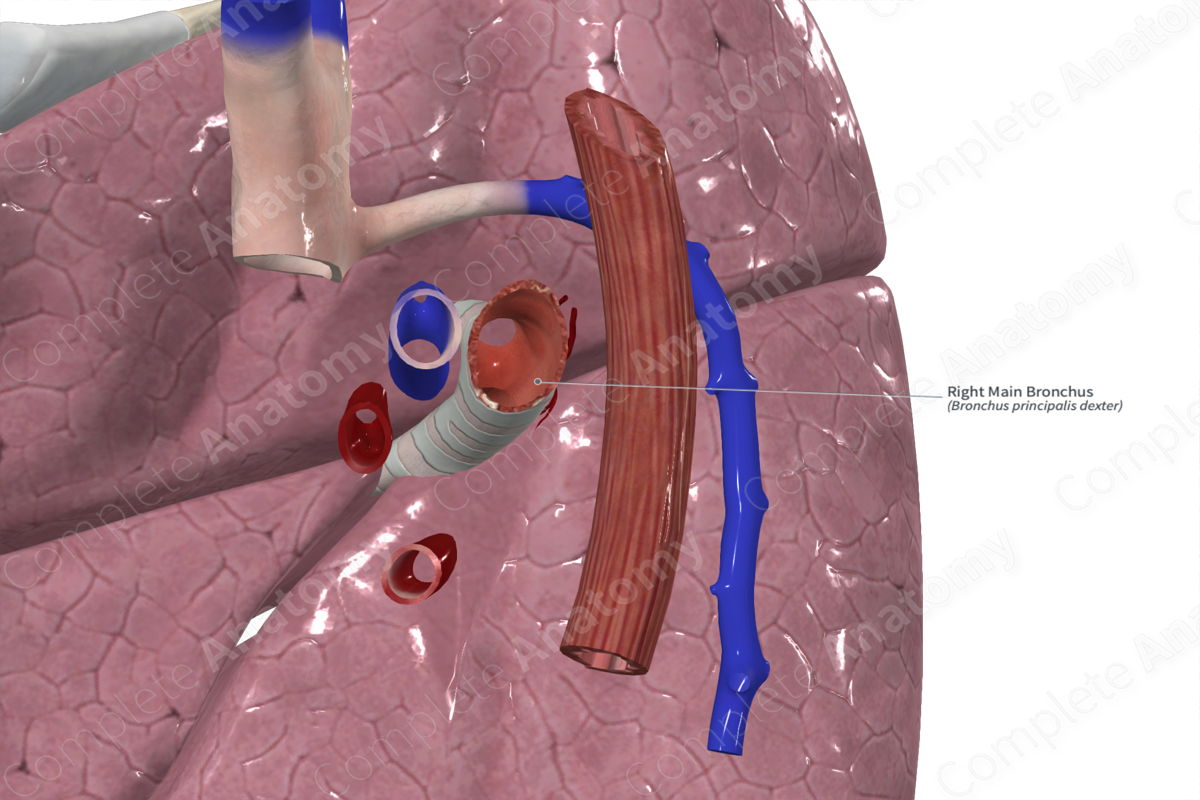
Structure
The right main bronchus is formed at the bifurcation of the trachea into right and left main bronchi around the level of the sternal angle. It passes inferolaterally to reach the hilum of the right lung at the level of the fifth thoracic vertebra. Here, it gives off the superior lobar (or secondary) bronchus and continues as the bronchus intermedius.
The right main bronchus is wider and much shorter than the left main bronchus. Additionally, it travels more vertically than the left main bronchus; thus, inhaled objects are more likely to become lodged in the right main bronchus.
Related parts of the anatomy
Key Features/Anatomical Relations
As the right main bronchus courses from its origin at the distal end of the trachea to the hilum of the left lung, the azygos vein arches over it. Additionally, the right main bronchus is accompanied by the pulmonary artery and veins.
The right main bronchus forms part of the root of the right lung. As it enters the hilum of the right lung, it lies posterior to the right pulmonary artery and right superior pulmonary vein, and superior to the right inferior pulmonary vein.




